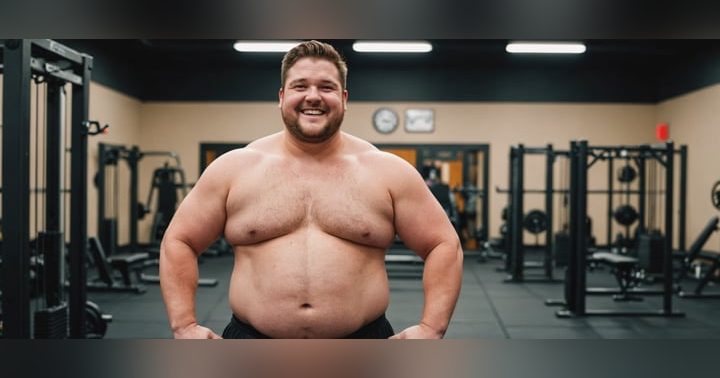Parallels of Past Pandemics: The LGBTQ+ Community's Struggles from AIDS to COVID-19

Decades of HIV Research Paved the Way for the COVID-19 Vaccine. You’re Welcome, Straight People.
During the height of the COVID-19 pandemic, global healthcare systems were overwhelmed, economies suffered severe disruptions, and widespread uncertainty and fear gripped communities worldwide. While some referred to this pandemic as “The Great Equalizer,” it was clear that minority communities, including the LGBTQ+ community, were disproportionately affected.
Furthermore, the fear and response to the pandemic for some gay men evoked memories of the early days of the AIDS crisis, bringing up trauma, anxiety, and concerns for the future.
The Origins of the AIDS Epidemic
On June 5, 1981, the CDC published an article describing cases of a rare lung infection in five young, previously healthy gay men living in Los Angeles. These men also had other unusual infections, indicating their immune systems weren't functioning properly. By the time the report was published, two of these men had died, with the remaining three passing away shortly afterward. This marked the first official report of what would become known as the AIDS epidemic.
Initially, this illness was referred to as Gay Related Immune Deficiency (GRID) and colloquially known as "gay cancer" or "gay plague." It wasn't until September 1982 that the CDC began using the term Acquired Immune Deficiency Syndrome (AIDS).
Government Response
On April 23, 1984, Margaret Heckler, then the US Department of Health and Human Services Secretary, announced that Dr. Robert Gallo and his colleagues had identified the cause of AIDS: a retrovirus later named HIV. Heckler also revealed that work was underway on a diagnostic blood test and expressed hope for an AIDS vaccine within two years.
Meanwhile, the government's response was slow and inadequate. President Ronald Reagan didn't address the AIDS crisis until four years after the first cases emerged, and his successor, George H.W. Bush, delayed addressing the situation further, waiting more than a year into his presidency to address the situation. In fact, he made zero promises regarding funding to fight the pandemic and repeatedly suggested that people should "change their behavior," so they didn't become infected by HIV.
The Emergence of Antiretroviral Therapy
The LGBTQ+ community had to rely on itself, with support from true allies. They had to mobilize their own resources and support networks to fund critical research and treatment developments, often stepping in where government support was lacking.
In the late 1990s, antiretroviral therapy became highly effective, turning HIV from a terminal illness into a manageable chronic condition. But not before the AIDS epidemic took a devastating toll on the gay community.
By 1995, one in nine gay men in the United States had been diagnosed with AIDS, with one in fifteen having died from it. Approximately 160,000 self-identified gay men aged 25 to 44 died from AIDS, representing 10% of that population.
Though advancements in HIV treatment have been made, the topic of HIV/AIDS has receded from public discourse. For many outside the gay community, it seemed as if the crisis had simply "gone away." However, HIV remains a significant concern within the LGBTQ+ community, with a higher prevalence among gay men.
In 2020, there were 1.5 million new HIV infections globally and nearly 700,000 deaths from AIDS-related illnesses. The HIV/AIDS pandemic continues, even as it receives less attention.
HIV Research Paved the Way for Rapid COVID Vaccine Development
The rapid development of COVID-19 vaccines was possible due to decades of HIV research, particularly around mRNA technology. From 2000 to 2020, the US government contributed $12 billion to HIV vaccine research, averaging $600 million per year. In contrast, within a few months of the COVID-19 pandemic, the US government allocated $10 billion to COVID vaccine research.
The irony isn't lost that the foundational HIV/AIDS research, funded by the LGBTQ+ community in the 80s and 90s due to societal neglect, was later utilized by the government to swiftly develop a COVID-19 vaccine for the general population.
Despite this, the COVID-19 pandemic disproportionately impacted the LGBTQ+ community by exacerbating existing economic disparities, limiting access to healthcare, and increasing social isolation, further compounding the challenges faced by this already vulnerable group, as highlighted in the Human Rights Campaign’s white paper “The Lives and Livelihoods of Many in the LGBTQ Community are at Risk Amidst COVID-19 Crisis.”
Disproportionate Impact #1: Employment & Finances
LGBTQ+ individuals already faced significant economic disparities compared to their straight and cisgender counterparts, with nearly 10% of LGBTQ+ people unemployed and 22% living in poverty, compared to an estimated 16% of the general population.
Workplace discrimination has created additional economic barriers for the LGBTQ+ community, with 11 to 28% of LGBTQ+ adults having reported lost promotions due to their sexual orientation and 27% of transgender workers experiencing job loss, denial of hire, or missed promotions due to their gender identity.
Exacerbating this, approximately 40% of the LGBTQ+ community worked in industries highly affected by COVID-19, such as restaurants, hospitals, education, and retail. As a result, 17% of LGBTQ+ individuals lost their jobs compared to 13% of the general population during the early pandemic.
Disproportionate Impact #2: Access to Healthcare
Economic disparity made it difficult for LGBTQ+ people to afford healthcare, with 17% of LGBTQ+ adults lacking health insurance, compared to 12% of non-LGBTQ+ adults. This lack of insurance hindered access to basic healthcare, including COVID testing and treatment.
Furthermore, 23% of LGBTQ adults of color, 22% of transgender adults, and 32% of transgender adults of color had no form of health coverage during this time, which was exacerbated by the Trump administration's attempt to remove nondiscrimination protections for transgender people in healthcare.
Disproportionate Impact #3: Family Leave Inequities
Same-sex couples raising children were twice as likely to live near the poverty line, and single LGBTQ+ parents faced even higher risks. Challenges in paid medical and family leave were pronounced, with fewer than half of employers' policies covering new parents of all genders equally. LGBTQ+ workers stated they often faced fears of discrimination when requesting leave, and many were at risk of being fired for coming out.
If LGBTQ+ individuals lacked access to paid leave, either to take care of themselves or a loved one, they ran the risk of having to work even when feeling unwell, which not only prevented them from recovering but also increased the risk of spreading the virus to others.
Disproportionate Impact #4: Elder Isolation and Youth Homelessness
Older LGBTQ+ people were twice as likely to live alone and four times less likely to have children, leading to a lack of support during the COVID-19 pandemic. Meanwhile, prior to the pandemic, LGBTQ+ youth were 120% more likely to experience homelessness and heavily relied on public schools and welfare agencies. These circumstances meant that LGBTQ+ youth relied heavily on food and other resources provided by public schools and their affiliated child welfare agencies, which were affected by closures throughout the pandemic.
The Path Forward for Greater Equity
The COVID-19 pandemic affected everyone, but the LGBTQ+ community, among other marginalized communities, faced unique challenges. Fortunately, local organizations, national philanthropic initiatives, and resources like the Ali Forney Center, Out2Enroll.org, the Trevor Project, and the LGBT National Hotline offered ways to help and seek assistance.
Still, the pandemic highlighted the urgent need for improved government support and equitable workplace policies to ensure the LGBTQ+ community is equally cared for and protected. While the COVID-19 pandemic may be behind us, we must advocate for ourselves and push for more inclusive policies that pave the way for a more equitable future.
And remember. Every day is all we have, so you've got to make your own happiness.
For more information on this topic, listen to Episode 03. Surviving Another Pandemic.
Tune into your favorite podcast player every Tuesday for new episodes of A Jaded Gay.


















